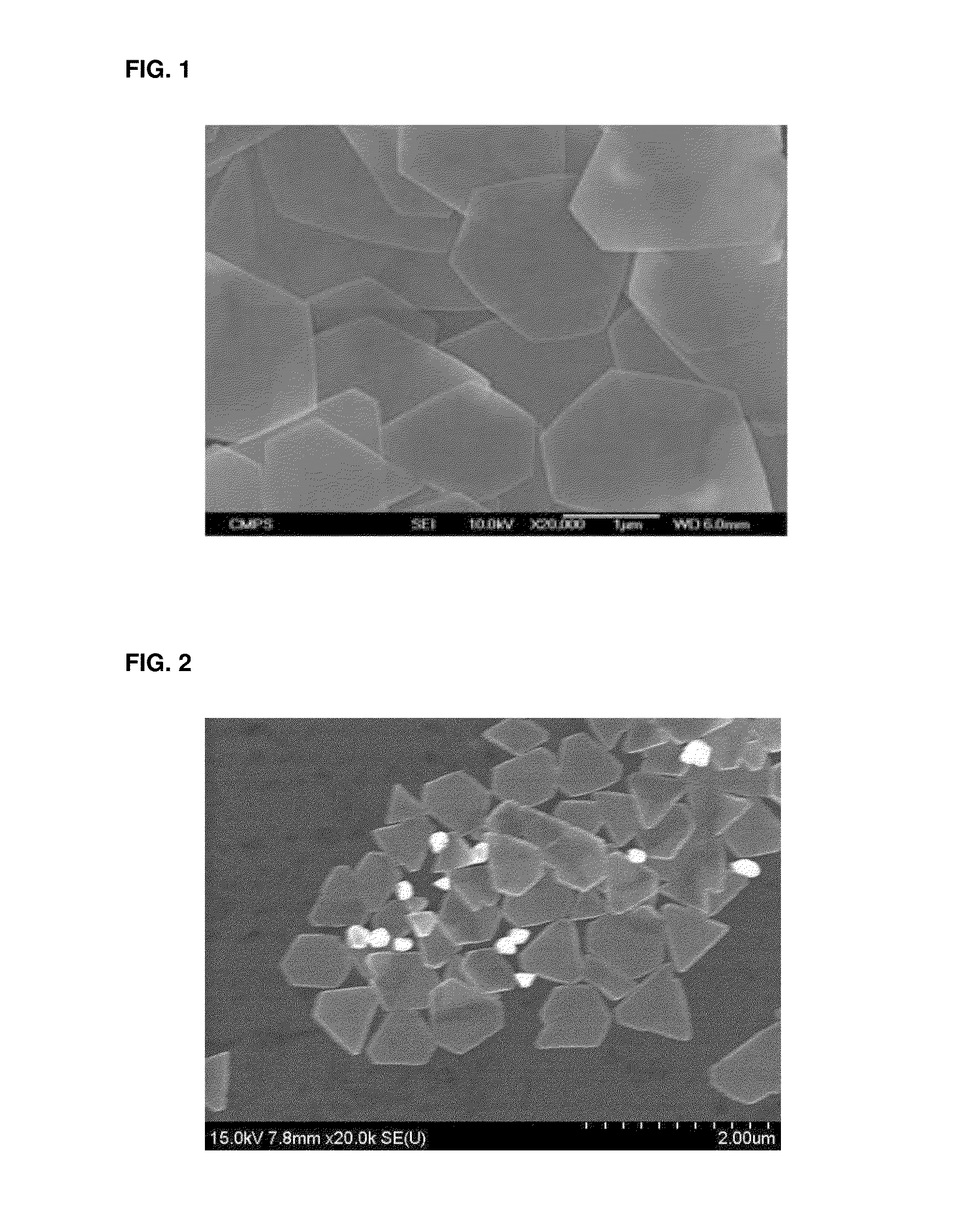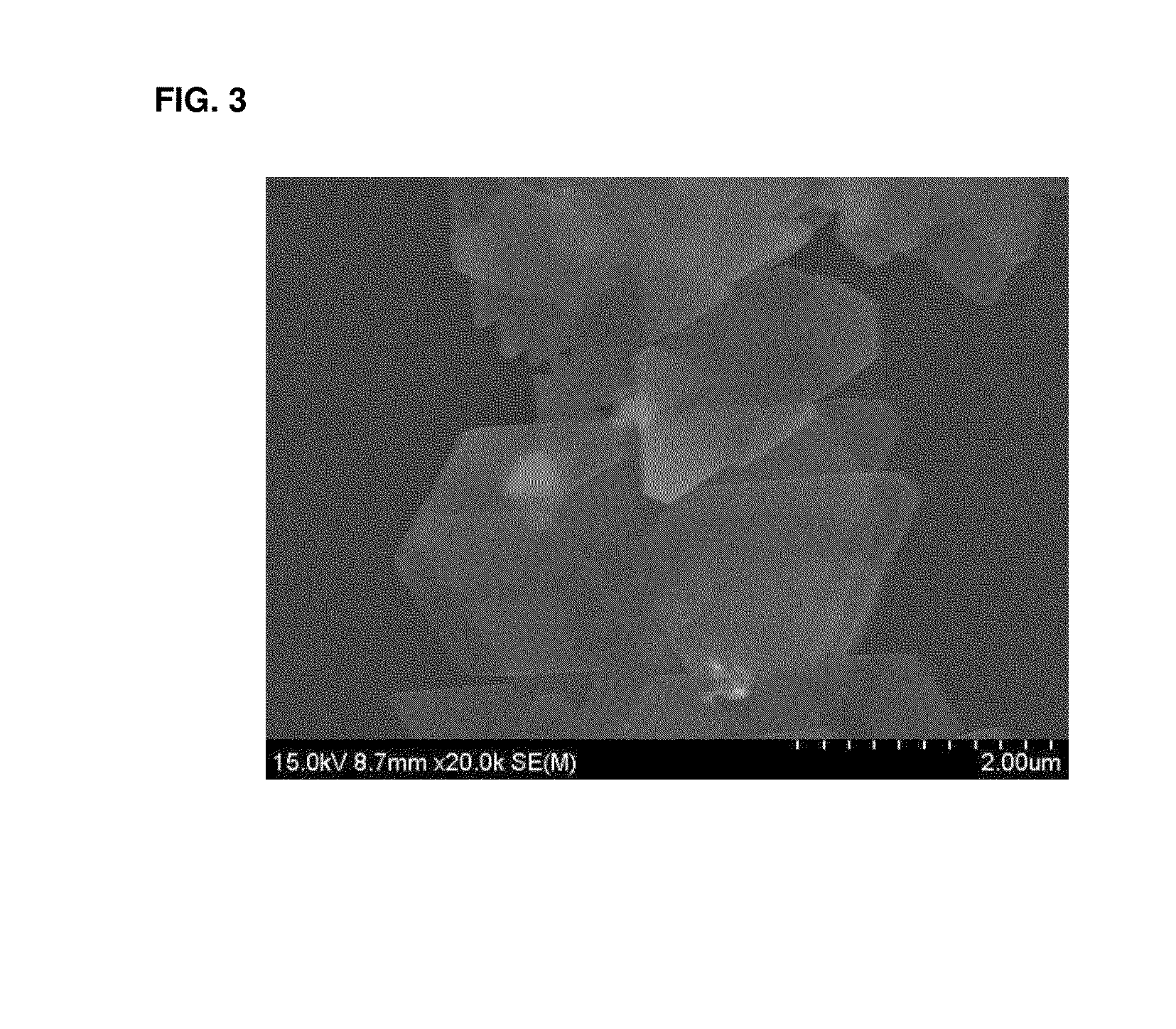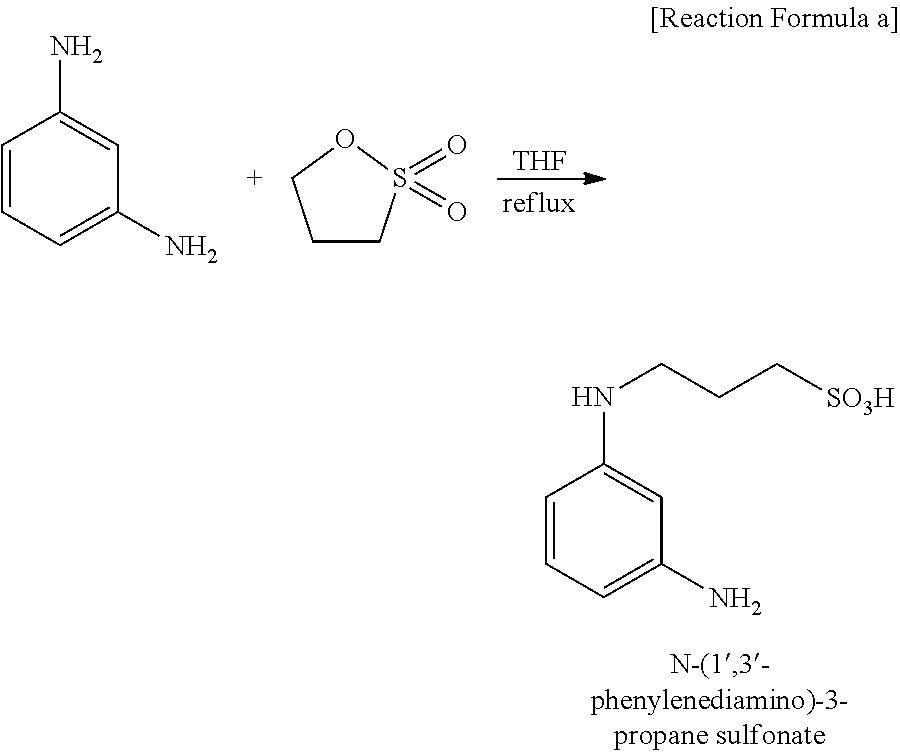Metal nanoplate, a method for preparing the same, a conductive ink composition, and a conductive film comprising the same
- Summary
- Abstract
- Description
- Claims
- Application Information
AI Technical Summary
Benefits of technology
Problems solved by technology
Method used
Image
Examples
example 1
[0084]100 mg of the conductive polymer P[ANi]0.5-[N-(1′,3′-phenylenediamino)-3-propane sulfonate]05 prepared in Synthesis Example 2 and 167 mg of AgNO3 were dispersed in 50 ml of distilled water and left alone at 4° C. for 168 hrs. The precipitated lump of the metal nanopltes was filtered with a paper filter, washed with 50 ml of distilled water, and dried well so as to obtain the refined metal nanoplate.
example 2
[0085]100 mg of the conductive polymer P[ANi]0.5-[N-(1′,3′-phenylenediamino)-3-propane sulfonate]05 prepared in Synthesis Example 2 and 167 mg of AgNO3 were dispersed in the mixed solution of 25 ml of distilled water and 25 ml of ethylene glycol and left alone at −25° C. for 168 hrs. The precipitated lump of the metal nanopltes was filtered with a paper filter, washed with 50 ml of distilled water, and dried well so as to obtain the refined metal nanoplate.
example 3
[0086]100 mg of the conductive polymer P[ANi]0.5-[N-(1′,3′-phenylenediamino)-3-propane sulfonate]05 prepared in Synthesis Example 3 and 100 167 mg of AgNO3 were dispersed in 50 ml of distilled water and left alone at 4° C. for 168 hrs. The precipitated lump of the metal nanopltes was filtered with a paper filter, washed with 50 ml of distilled water, and dried well so as to obtain the refined metal nanoplate.
[0087]FIGS. 1 to 3 are the SEM photos of the silver nanoplates obtained in Examples 1 to 3. The size of the silver nanoplates obtained like this was measured by using the SEM photos, and it is recognized that the nanoplates show the plate shape having the thickness of about 10 nm to about 20 nm and the diameter or the width of about 1 μm to about 2 μm on average.
PUM
| Property | Measurement | Unit |
|---|---|---|
| Temperature | aaaaa | aaaaa |
| Temperature | aaaaa | aaaaa |
| Time | aaaaa | aaaaa |
Abstract
Description
Claims
Application Information
 Login to View More
Login to View More - R&D
- Intellectual Property
- Life Sciences
- Materials
- Tech Scout
- Unparalleled Data Quality
- Higher Quality Content
- 60% Fewer Hallucinations
Browse by: Latest US Patents, China's latest patents, Technical Efficacy Thesaurus, Application Domain, Technology Topic, Popular Technical Reports.
© 2025 PatSnap. All rights reserved.Legal|Privacy policy|Modern Slavery Act Transparency Statement|Sitemap|About US| Contact US: help@patsnap.com



